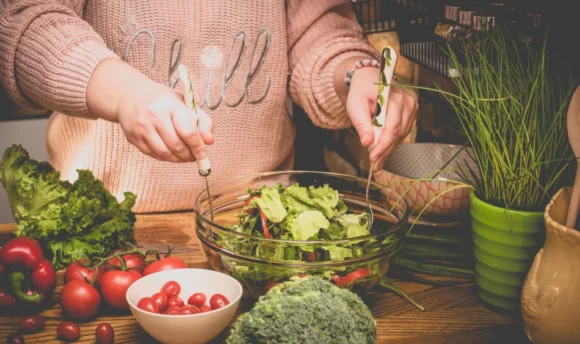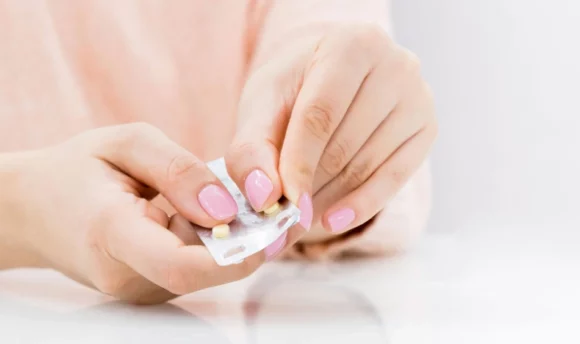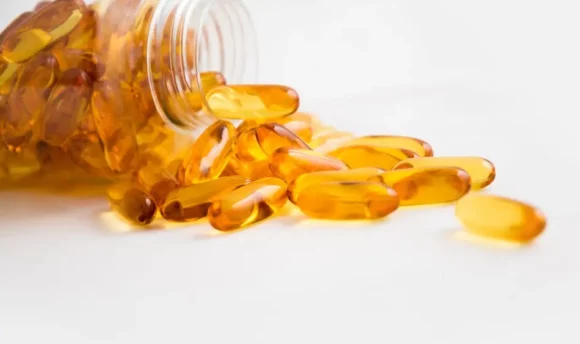How to Lose Fat Without Losing Muscle – Is It Possible?
Losing weight can be very motivating, but when it comes to the cost of your hard-earned muscle, you might feel discouraged. Let’s look at how to burn fat without shedding any muscle mass.

Losing weight is a natural part of exercising and is something many of us strive to achieve. We do it so that we can look our absolute best or achieve our body image goals. And while we all know that losing weight is never easy, there are some challenges that make it much more difficult than it needs to be.
An ever-present problem arises when we lose weight, and that’s the issue of losing muscle mass as well. So, how do we get around this problem? That’s what we’ll be taking a look at throughout this article. Read on for more.
How to Lose Fat Without Losing Muscle? We Have 5 Tips
In order to lose fat and not lose muscle, you are going to have to find a balance between pushing yourself as much as you can and limiting yourself.
It goes without saying that everyone’s body is different, and everyone will experience different results. The most important thing to do is listen to your body and adjust your eating and workout routine accordingly.
Here are 5 surefire methods for losing fat without losing muscle.
#1 Take your time to recover
Any good personal trainer will tell you that the recovery process is one of the most important aspects of any workout routine.
It’s crucial that you give yourself enough time to recover between each and every one of your workouts. This is especially true if you eat fewer calories and perform more intense workouts, such as cardiovascular or aerobic exercise.
Getting plenty of sleep each night, especially on the evenings of your workout days, is an excellent way to recover. It helps restore your energy levels and gives your body enough time to be relaxed in order to get up and move the next day comfortably.
#2 Don’t be too restrictive
One of the biggest mistakes we make when trying to lose weight is restricting ourselves. You want to avoid any drastically restrictive eating plans because they are incredibly difficult to maintain in the long run, especially if your goal is fat loss.
If you want to lose fat while not experiencing muscle loss, you’ll need to avoid overtraining and any workout programs that might cause strain and injury.
After all, completely draining your energy after every workout will halt your weight loss progress, stunt your muscle growth, and leave you with an unchanging body fat percentage.
#3 Exercise frequently
Exercise is an incredibly important part of maintaining your lean muscle mass.
In 2018, researchers found that when individuals followed an eating plan and performed some kind of exercise, they were able to lose fat without losing muscle even while in a caloric deficit.
#4 Change your eating plan
Changing your eating plan is another essential aspect of weight loss and fat loss. We often start losing muscle mass while working out because we are not supporting our muscle tissue with essential food groups, like proteins and healthy fats.
To combat this loss, you should incorporate more protein and fewer unhealthy fat sources.
In fact, a review published in 2016, which consisted of 20 studies, found that older adults could retain more of their muscle tissue and lose fat when following diets that had higher protein contents. So, it goes without saying that you should eat a good amount of proteins to lose fat without losing muscle!
Some of the best protein sources include lean meats like chicken and turkey, eggs, nuts, seafood, beans, low-fat dairy products, and brown rice.
If you’re able to add a few of these foods into your everyday diet, you will enjoy fantastic fat loss while still keeping those muscles that you worked so hard for.
#5 Get enough protein
Protein is the building block for all of our muscles, and without it, we’d never be able to build any muscle, no matter how much weight training we might do. If you want to be able to experience healthy weight loss and not muscle loss, then eating proteins will definitely help. You’ll provide your body with all the energy and nutrients to get you through those workouts.
Protein-rich foods also often leave us feeling fuller and more satisfied after a meal, which can help curb our cravings and prevent us from snacking. This will greatly aid your weight loss, as you won’t be consuming any unnecessary calories throughout the day (if you have enough willpower!).
Can You Lose Fat Without Losing Weight?
The short answer is yes, you absolutely can burn away your excess body fat while still staying the same weight.
In order to do this, you would essentially have to build muscle at the same time that you are losing fat, which is pretty much impossible for the average person.
Bodybuilders will generally bulk to build their muscles through intensive weight training. Then, when it comes to burning away body fat, they will slim down for fat loss without experiencing weight loss. This is a much easier and more effective way of fat loss without losing weight.
You will end up weighing the same as before, with the difference being that you will have more muscle, more fat loss, and will also appear leaner.
How to Maintain Muscle Mass?
For many people, losing fat often comes at the cost of accelerated muscle loss, and this is a far more common experience than you might think.
So, let’s go over some tips on how you can maintain your hard-earned muscles while still slimming down and experiencing effective fat loss.
Lifelong weight training
When we turn 40, our bodies naturally begin to experience muscle loss, generally resulting from a decrease in testosterone in combination with reduced activity levels. This loss can occur at rates of 3–10% every decade and perhaps even quicker for people who are not in excellent health.
To combat this natural loss, you can consider working out with weights 2–3 times each week, targeting each of the major muscle groups in your body. Remember, rest is an essential aspect when planning a workout routine, so allow yourself two days of rest between your workouts.
Do the right training
Our muscles store quite a lot of glucose. When the body runs out of this glucose, as well as the glucose found in the blood and liver, your body will begin to break down muscle proteins to access the glucose stored in them.
Your body uses it to maintain the brain and other vital organs in a process known as gluconeogenesis. This is less than ideal for muscle growth and maintenance.
So, if your goal is weight loss, you should try not to maintain a fasted or empty stomach regularly. If you do, be sure to drink an energy drink before or during your workout to prevent this process.
Follow a protein-rich diet
As we mentioned previously, protein is incredibly important for your muscles, as it acts as the building block your body needs to build up muscle mass. So, if you want to maintain your muscles while still losing weight, then eating plenty of protein is the way to go.
Some of the easiest high-protein foods to incorporate into your diet include chicken, turkey, beans, quinoa, and low-fat dairy.
How to Do Cardio Without Losing Muscle?
Cardio is a fantastic tool for weight loss, but, unfortunately, it can also be the killer of muscle maintenance. So, if you love to do cardio but are struggling to keep those muscles growing, then consider these simple steps:
Get enough BCAAs
BCAAs, or branched-chain amino acids, are the building blocks of protein and are essential in helping you maintain an anabolic state while you are exercising or fasting.
They are most effective when consumed when you are in a fasted state or just before your workout and can help you hang on to those muscles you’ve worked so hard for.
Make sure your workout schedule is consistent
Of course, you are going to have to be committed and consistent when it comes to your planned workout routine. Still, it can be really difficult to stick to your prescribed exercise routine and decide to take it easy at the gym a few weeks in a row.
If you can, try your best to stay away from falling into that habit. Stick to a plan that will hold you accountable for your choices.
Consider using a product like Beyond Body to provide you with a comprehensive, manageable workout plan that you’ll be able to follow for weight loss without feeling overwhelmed.
Eat the right amount of food
While you are, of course, going to want to make sure that you are giving your body enough fuel, it’s important that you aren’t overeating or undereating. When it comes to losing weight, a good rule of thumb is to eat 500 fewer calories than what you would need to maintain your current weight.
Doing this can lead to a loss of about 1–2 pounds each week. You should also be following a healthy diet that incorporates all different food groups while avoiding unhealthy fats, carbs, and processed sugars.
How to Know if I am Losing Muscle or Fat?
A few telltale signs let you know that you are losing muscle rather than losing fat. Here are some of the most notable ones.
You feel strained during your workouts
This might seem like a no-brainer, but your workouts will start to feel more difficult when you begin to lose muscle and not fat.
You might notice that you have less strength at the gym – those reps seem harder than they did last week, or you aren’t able to lift heavier weights anymore.
Your body fat is not changing
If you are losing weight, but the total percentage of fat in your body does not seem to change, then you are likely shedding muscle.
You might notice that your body simply is not changing shape in the way you want it to, although some of your measurements might shrink a bit.
You feel sluggish daily
Inadequate nutrition can cause your muscles to degrade, which, in turn, causes impaired function in other aspects of your life.
It might feel like lifting up a chair is equivalent to lifting weight at the gym, or walking to the store feels more like a marathon than a 5-minute stroll.
A Word From a Personal Trainer
Muscle loss is an authentic challenge many active individuals have to deal with, and it’s something you might find yourself dealing with now. If you notice that you are losing muscles and not fat, don’t fret – you’re not alone. There are so many resources out there that can help you maintain a consistent level of weight loss while still helping you keep those muscles.
Try not to concern yourself too much with aesthetics. As a society, we place far too much importance on how we appear.
If the only reason that you are working out to lose weight and build muscle is to appear more “attractive” to others, then perhaps you should reconsider your motivations. That kind of mindset just isn’t sustainable.
Conclusion
Losing fat can be a challenging journey, to say the least, and it becomes even more challenging when we start losing muscle.
But don’t worry, losing a bit of muscle isn’t the end of the world, and with a bit of motivation and determination, you’ll be able to achieve your dream weight and body in no time.

















































 Select your language:
Select your language: 








